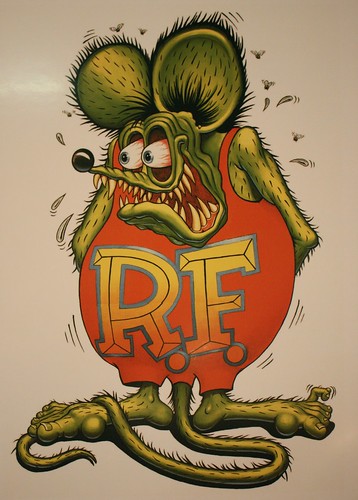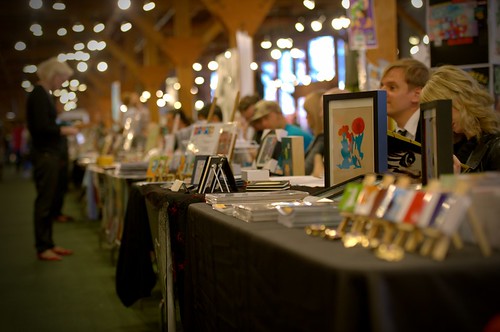There is a visual art movement on the rise that is made up of artists who are not concerned with whether The Art World recognizes their art. The main defining characteristic of Lowbrow art is that most people generally do consider it art. Lowbrow refers to underground, tattoo, comic, cartoon or street art. In the midst of this relatively new art period there are still critics who choose to largely ignore Lowbrow art. Ironically, Lowbrow being deemed as a legitimate movement has been decided by The Art World. It has garnered the attention of many art collectors who understand the way an emerging art tends to transition from thumbing its nose at fine art to it itself becoming fine art.
Impressionism, Dada, Expressionism, Surrealism, and Fauvism progressed in a similar manner as Lowbrow finds itself in progress today. Traditional art critics in Europe literally lowered their brows at the French Impressionists. These same people rejected the work of Van Gogh. During the modern art movement at the start of the 20th century Dadaists found acceptance by the curated art world and became highly promoted.
 |
| Photo Credit: Nick Ares CC BY-SA 2.0 |
Lowbrow artists typically poke fun at convention. Perhaps taking a cue from Pablo Picasso:
...they know the "rules" of art, and purposefully choose to break them. If you have a sense of humor, then there is something from the Lowbrow movement for you. Humor is always present whether in a joyous, childish or sarcastic manner. Lowbrow art is commonly labeled in various different ways: underground, urban, Kulture, Neo-Pop, anti-establishment, pop surrealism, visionary, alternative and even "Nobrow."
"Learn the rules like a pro, so you can break them like an artist,"
...they know the "rules" of art, and purposefully choose to break them. If you have a sense of humor, then there is something from the Lowbrow movement for you. Humor is always present whether in a joyous, childish or sarcastic manner. Lowbrow art is commonly labeled in various different ways: underground, urban, Kulture, Neo-Pop, anti-establishment, pop surrealism, visionary, alternative and even "Nobrow."
 |
Alternative Press Expo 2010 in San Francisco, California
|
 |
Staple! 2014 in Austin, Texas,
Photo credit: Anissa Bryant
|
"a showcase for the folks who publish comics and zines and possible literary masterworks out of their own apartments."
What qualifies as Lowbrow currently includes a wide variety of artists all concentrated into one. Currently a Lowbrow artist who designs decals may be sanctioned in the same category with an artist who creates technically skilled urban murals. With time sorting different sub-classifications within the art movement itself should be expected to occur. At the present it is time to notice and begin collecting Lowbrow art to celebrate the time period from the late 50s to now to be able to pass the art and its story on to future generations.






.png)




2 comments:
I am a fan of much lowbrow art .The Picasso reference is a good one since Pablo practiced what he preached, being an exceptional 'conventional ' creator in some ways validated his avant garde work. Many low brow artists could succeed with conventional approaches but simply choose not to. And ever shall it be so.
Very good points, Paul. That you said lowbrow artists "simply choose" is spot on, as freedom to choose how they go about art seems to be at the core of the movement. Thanks for your comment.